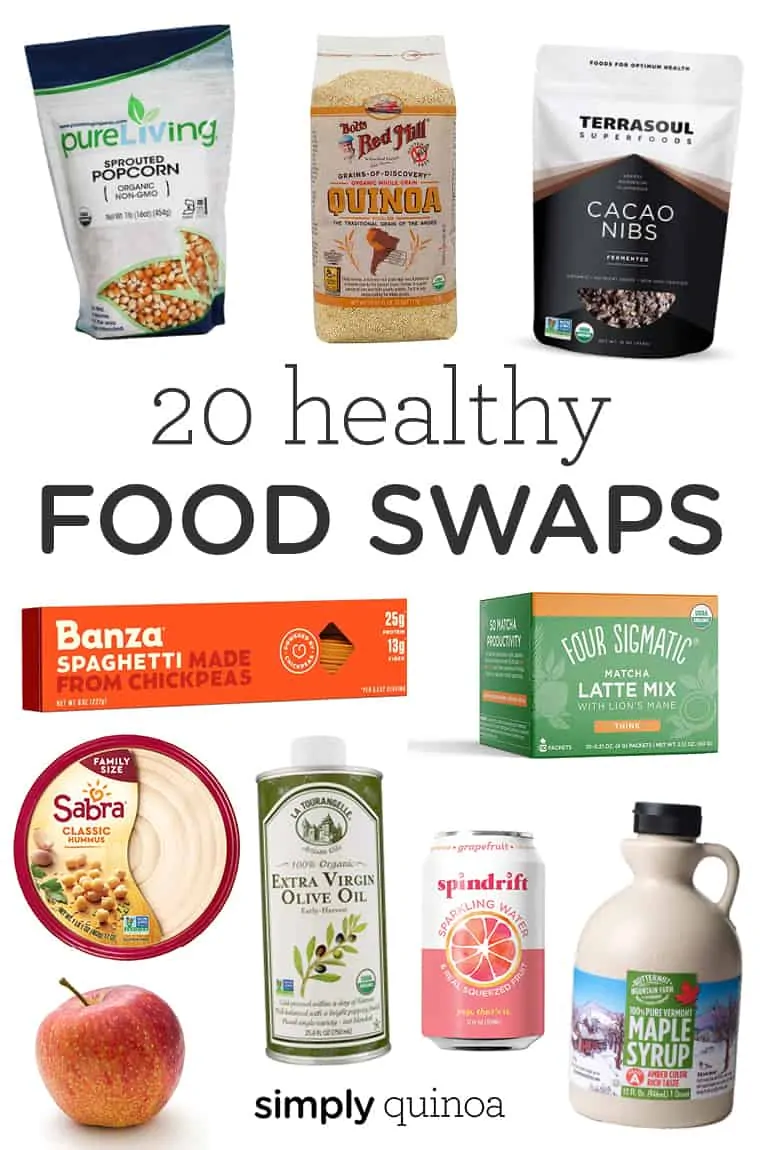10 Easy Healthy Food Swaps for Better Nutrition: Simple Diet Changes for Improved Health
Making small adjustments to your daily meals can lead to significant improvements in energy levels, digestion, and overall well-being without requiring a complete diet overhaul. Based on personal experiences and supported by research, these healthy food swaps focus on incorporating more whole foods, fiber, and nutrients while reducing added sugars, unhealthy fats, and processed items. According to studies, gradual dietary changes are more sustainable and likely to become long-term habits. This guide outlines 10 practical swaps, drawing from resources like the CDC's healthy eating recommendations, to help you build a nutritious diet that remains enjoyable and satisfying.
Why Make Healthy Food Swaps? The Impact of Gradual Changes
Implementing small, incremental swaps can accumulate into substantial health benefits over time, such as better weight management, heart health, and sustained energy. Research indicates that transitioning gradually to healthier eating patterns enhances adherence and long-term success, as opposed to abrupt overhauls. For instance, the CDC emphasizes simple substitutions to reduce calorie intake while boosting nutrient density, like opting for low-fat alternatives or adding more fruits and vegetables. These changes not only support physical health but also improve mood and focus through better hydration and balanced nutrition.
For more nutrition insights, visit our Elite Blog.
10 Practical Healthy Food Swaps
Here are 10 evidence-based swaps that are easy to implement, cost-effective, and flavorful. Each focuses on nutritious alternatives that maintain satisfaction.
| Original Item | Healthy Swap | Key Benefits | Tips for Implementation |
|---|---|---|---|
| White Bread | Whole-Grain Bread | Higher fiber, vitamins, and minerals for better digestion and fullness. | Look for "100% whole grain" labels; use for sandwiches or toast. |
| Sugary Soda | Sparkling Water with Fruit | Reduces sugar and calories while improving hydration and mood stability. | Add lemon, lime, or berries for natural flavor. |
| Flavored Yogurt | Plain Greek Yogurt | More protein, less sugar; supports muscle health and satiety. | Top with fresh fruit, honey, cinnamon, or nuts. |
| Potato Chips | Air-Popped Popcorn | Whole grain with fewer calories and fats; cost-effective snack. | Season lightly with herbs instead of salt or butter. |
| Mayonnaise | Mashed Avocado or Hummus | Healthy fats, protein, and fiber for heart health. | Add lemon or herbs for extra zest in sandwiches. |
| Creamy Dressings | Olive Oil and Vinegar | Fewer calories, healthy fats; reduces inflammation. | Mix with mustard or herbs for variety. |
| Candy Bars | Nuts and Dark Chocolate | Antioxidants, healthy fats, and lower sugar for sustained energy. | Portion control: A small piece of dark chocolate with a handful of nuts. |
| White Rice | Brown Rice or Quinoa | Increased fiber and complete proteins for blood sugar control. | Cook in batches for meal prep. |
| Fried Foods | Baked or Grilled Items | Lower fat and calories; preserves natural flavors. | Roast vegetables for crispiness. |
| Ice Cream | Frozen Banana "Nice Cream" | Natural sweetness, no added sugar; high in potassium. | Blend with nut butter or cocoa; experiment with berries. |
Foundations of Effective Swapping
To maximize benefits, prioritize reading nutrition labels, focusing on whole ingredients, and monitoring portions. The CDC recommends stocking up on staples like beans, oats, nuts, and frozen produce to facilitate healthier choices. This approach minimizes hidden sugars, sodium, and fats, promoting a balanced diet.
Tips for Making Healthy Swaps Stick
- Start Small: Introduce one swap per week to build habits gradually.
- Prepare in Advance: Keep whole-grain bread, fruits, and nuts on hand for quick access.
- Embrace Imperfection: Aim for progress over perfection; occasional treats maintain motivation.
- Get Creative: Experiment with seasonings, herbs, and new combinations to keep meals exciting.
Frequently Asked Questions About Healthy Food Swaps
- Do these swaps aid weight loss? Yes, by reducing calories and increasing nutrients, but combine with portion control and activity for best results.
- What if I dislike the taste of whole grains or plain yogurt? Taste buds adapt; start with mixes (e.g., half white/half brown rice) or add natural flavors like fruit or vanilla.
- Are there budget-friendly options? Absolutely—opt for store brands, bulk buys, or seasonal produce; swaps like homemade popcorn are often cheaper.
- How can I involve my family? Shop together, let them choose toppings, and frame swaps as fun experiments to encourage participation.
Real-Life Benefits of These Swaps
Users report sustained energy, improved digestion from higher fiber, and balanced blood sugar levels, reducing crashes. For example, switching to avocado or nuts adds satisfying healthy fats, curbing unnecessary snacking. Over time, these changes can diminish cravings for processed foods, fostering natural preferences for whole ingredients.
Conclusion
Incorporating these healthy food swaps can enhance your nutrition, save money, and inspire those around you. Resources from the Academy of Nutrition and Dietetics offer further guidance on evidence-based eating. Remember, small steps lead to lasting results—celebrate each progress toward better health.
Share your favorite swaps in the comments below!
Related Articles on Elite Blog:



Comments
Post a Comment
Thanks for your response,May God bless you